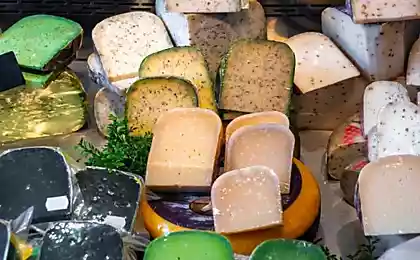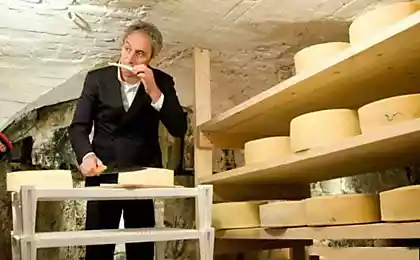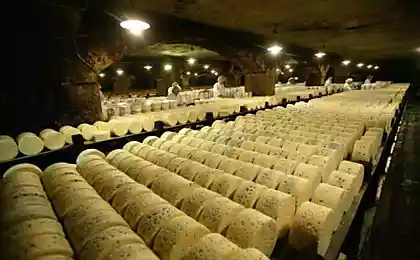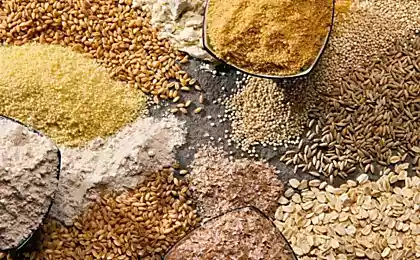478
Is it safe to eat blue cheese (moldy)
Recently I was "lucky" to buy a package of moldy cheese. But there is a silver lining, I wondered why in one case the mold is evaluated as an indicator of the unsuitability of the product and the other with sophistication. In our minds the ingrained perception that it is fresh and usable products may not be covered with mold. Then how about a blue cheese that long ago gained huge popularity among foodies? In this article we take a closer look at the famous blue cheese and find out whether it is possible to cook it at home.
Dangerous mold
Dangerous forms of mold are those that produce mycotoxins and aflatoxins. These toxins can negatively affect our respiratory system and in some cases even act as carcinogens. But not all mold produces harmful toxins. Special types of mold Penicillium Roqueforti and Penicillium Glaucum which are used for preparation of blue cheese, not produce the harmful substances. The combination of acidity, salinity, moisture, temperature and oxygen saturation creates an environment far from the production of harmful toxins. Moreover, P. Roqueforti and P. Glaucum have antibacterial properties and help fight pathogens.
Unfortunately, large food manufacturers, treating the minds of several human generations, we have believed that only a homogeneous structure in a vacuum pack with a large brand logo ensures safety. And moldy, rustic, unusual product of home production is equivalent to uncontrolled unsanitary conditions. But we understand that the products of artisans on the contrary more beneficial than eating a high degree of processing.
Blue mold cheese produces a unique effect. Mold dramatically speeds up two process: proteolysis (protein breakdown) and lipolysis (breakdown of fat). The result of the cheese gets a special texture and strong tangy flavor. The taste of the cheese cannot be compared with anything else.
The technology of preparation
Before proceeding directly to the preparation, let's touch on important aspects of this process.
Blue mold grows only during a certain period of time — the ripening of the cheese. Since the mould need a special acidity, it can not develop too young and still acidic cheese. At the same time, the mold is growing due to the nutrients in sufficient quantity is not available in Mature cheese.
Mold spores are very contagious to other cheeses. Thus, you should limit blue cheeses from other cheeses during this sensitive period.
Should the mold growth is provided by access to large quantities of oxygen. So the cheese is pierced with massive needle or knitting needle to oxygen in the formed channels received in the cheese. Breathing mold starts growing from the center of the head to the surface, creating a beautiful contrast of blue "veins" with a marble color of the cheese. Manufacturers of cheese every day, repeat the procedure a puncture within a week or two.
Then the cheese is wrapped in foil, thus preventing the uncontrolled growth of mold. The cheese is placed in a cooler temperature, allowing the mold to create a deep integrated structure, aroma and taste. In some cases, this last stage can take up to several months.
Whether, by the contact with the mold
Wishing to cook cheese with noble mold at home, be prepared for difficulties. Primarily because of the cheese. Store cheese is hardly suitable. Usually he's older, so the blue mould is not enough nutrients to sustain growth. Competition from the yeast in the crust simply would not allow blue mold retrostil. Therefore, it is necessary to find a young cheese with a thin crust or without it. Daredevils can try to cook your cheese.
Do not forget about the necessity of creating a large number of cavities within cheese for adequate penetration of oxygen inside. The regular puncture carries the "intrusion" of the cheese mold.
If you can not find the blue mold on sale, you can scrape it off moldy rye bread or another blue cheese. Although a simpler way is to crush a piece of blue cheese in a blender, adding capacity in a small amount of water and a pinch of salt.
Plenty of mocking on the cheese, turn him on his side. So the air will be easier to pass through the cheese. Set the temperature at 13°C, humidity should be 90-95%. When mold grows up, place the cheese in the refrigerator for several weeks or months. The process is quite complicated and thorough.
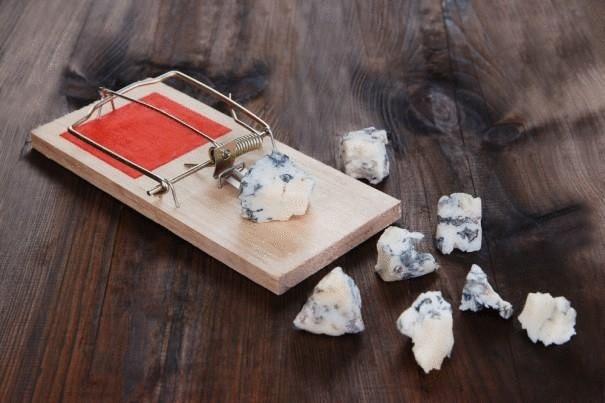
Conclusion
If the General course of cooking the blue cheese seemed interesting to you, please refer to specialized sources for more detailed explanations. After all, the quality of the product is affected by many additional factors, up to the power of the animal, which gave milk-based cheese.
I hope your homemade blue cheese will cause a devastating reaction from his tasters.
Did you do the blue cheese in the home environment? And maybe his taste is not worth all of the attendant problems? Share your opinion in the comments.
Source
Source: /users/559
Dangerous mold
Dangerous forms of mold are those that produce mycotoxins and aflatoxins. These toxins can negatively affect our respiratory system and in some cases even act as carcinogens. But not all mold produces harmful toxins. Special types of mold Penicillium Roqueforti and Penicillium Glaucum which are used for preparation of blue cheese, not produce the harmful substances. The combination of acidity, salinity, moisture, temperature and oxygen saturation creates an environment far from the production of harmful toxins. Moreover, P. Roqueforti and P. Glaucum have antibacterial properties and help fight pathogens.
Unfortunately, large food manufacturers, treating the minds of several human generations, we have believed that only a homogeneous structure in a vacuum pack with a large brand logo ensures safety. And moldy, rustic, unusual product of home production is equivalent to uncontrolled unsanitary conditions. But we understand that the products of artisans on the contrary more beneficial than eating a high degree of processing.
Blue mold cheese produces a unique effect. Mold dramatically speeds up two process: proteolysis (protein breakdown) and lipolysis (breakdown of fat). The result of the cheese gets a special texture and strong tangy flavor. The taste of the cheese cannot be compared with anything else.
The technology of preparation
Before proceeding directly to the preparation, let's touch on important aspects of this process.
Blue mold grows only during a certain period of time — the ripening of the cheese. Since the mould need a special acidity, it can not develop too young and still acidic cheese. At the same time, the mold is growing due to the nutrients in sufficient quantity is not available in Mature cheese.
Mold spores are very contagious to other cheeses. Thus, you should limit blue cheeses from other cheeses during this sensitive period.
Should the mold growth is provided by access to large quantities of oxygen. So the cheese is pierced with massive needle or knitting needle to oxygen in the formed channels received in the cheese. Breathing mold starts growing from the center of the head to the surface, creating a beautiful contrast of blue "veins" with a marble color of the cheese. Manufacturers of cheese every day, repeat the procedure a puncture within a week or two.
Then the cheese is wrapped in foil, thus preventing the uncontrolled growth of mold. The cheese is placed in a cooler temperature, allowing the mold to create a deep integrated structure, aroma and taste. In some cases, this last stage can take up to several months.
Whether, by the contact with the mold
Wishing to cook cheese with noble mold at home, be prepared for difficulties. Primarily because of the cheese. Store cheese is hardly suitable. Usually he's older, so the blue mould is not enough nutrients to sustain growth. Competition from the yeast in the crust simply would not allow blue mold retrostil. Therefore, it is necessary to find a young cheese with a thin crust or without it. Daredevils can try to cook your cheese.
Do not forget about the necessity of creating a large number of cavities within cheese for adequate penetration of oxygen inside. The regular puncture carries the "intrusion" of the cheese mold.
If you can not find the blue mold on sale, you can scrape it off moldy rye bread or another blue cheese. Although a simpler way is to crush a piece of blue cheese in a blender, adding capacity in a small amount of water and a pinch of salt.
Plenty of mocking on the cheese, turn him on his side. So the air will be easier to pass through the cheese. Set the temperature at 13°C, humidity should be 90-95%. When mold grows up, place the cheese in the refrigerator for several weeks or months. The process is quite complicated and thorough.

Conclusion
If the General course of cooking the blue cheese seemed interesting to you, please refer to specialized sources for more detailed explanations. After all, the quality of the product is affected by many additional factors, up to the power of the animal, which gave milk-based cheese.
I hope your homemade blue cheese will cause a devastating reaction from his tasters.
Did you do the blue cheese in the home environment? And maybe his taste is not worth all of the attendant problems? Share your opinion in the comments.
Source
Source: /users/559



